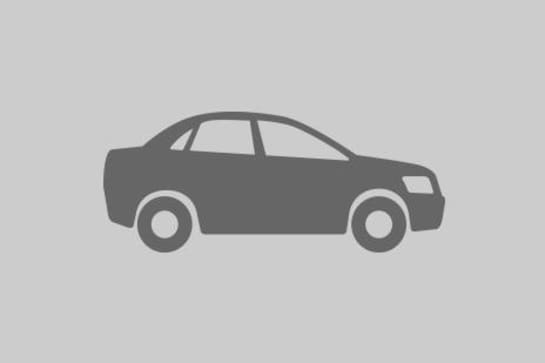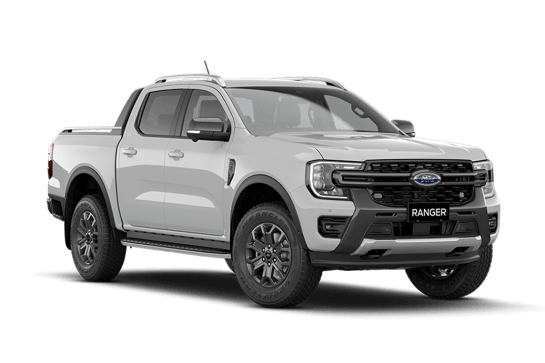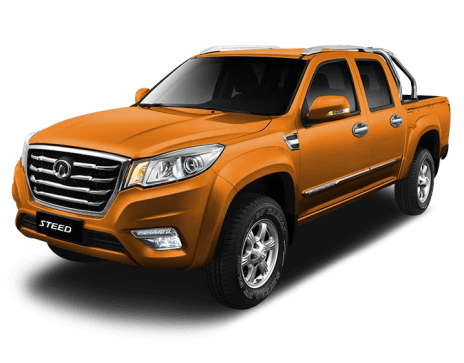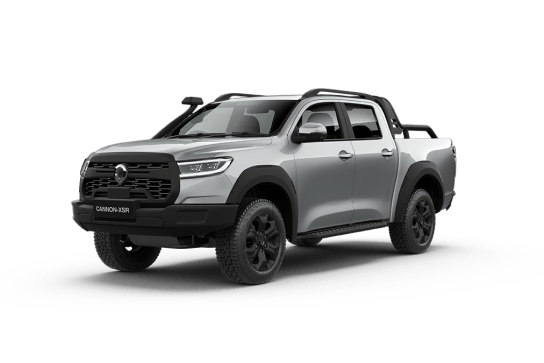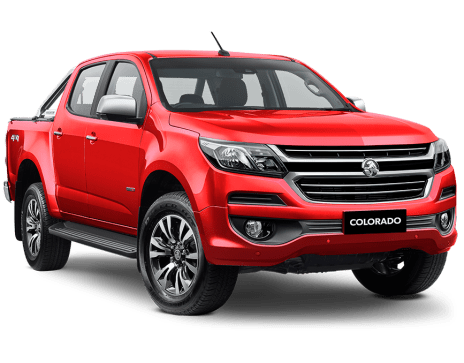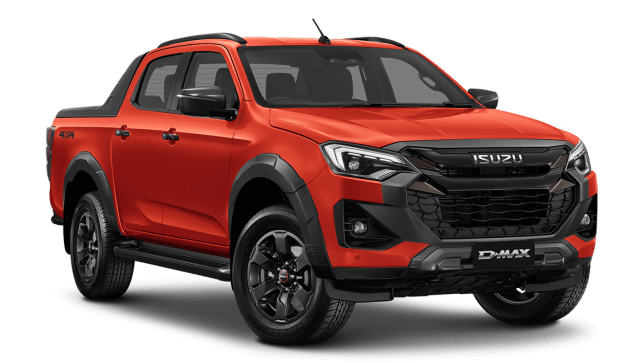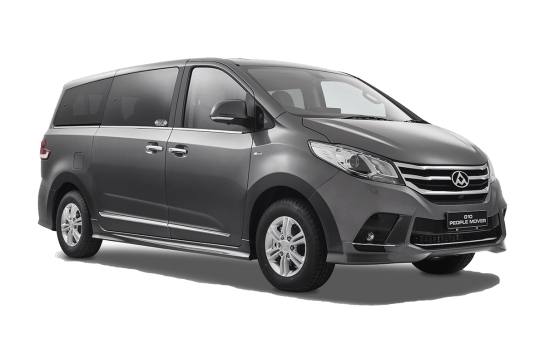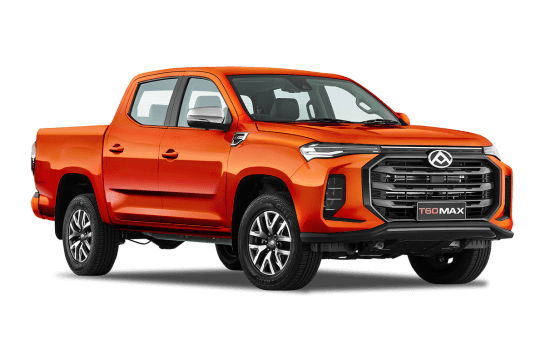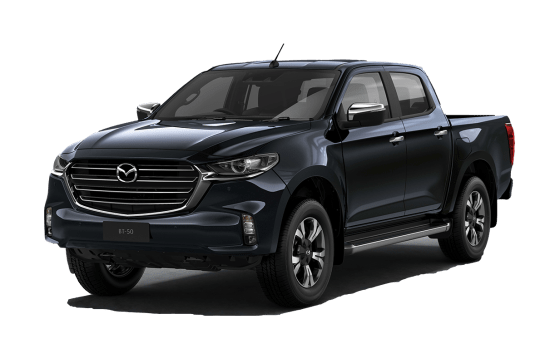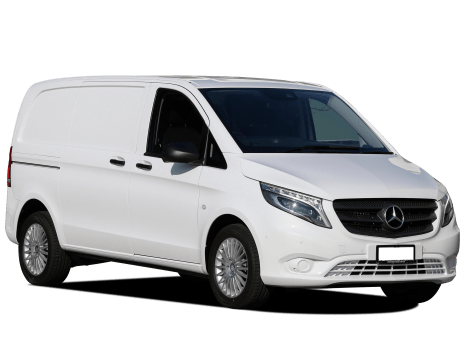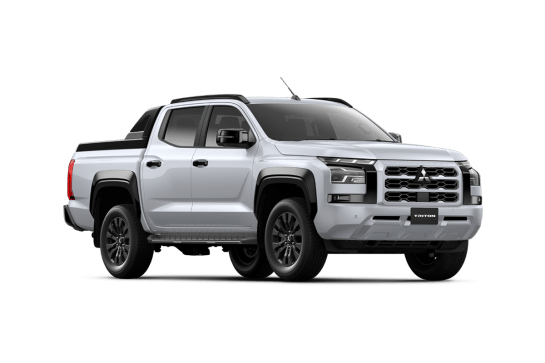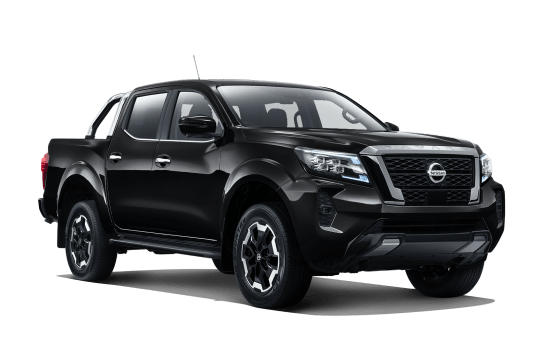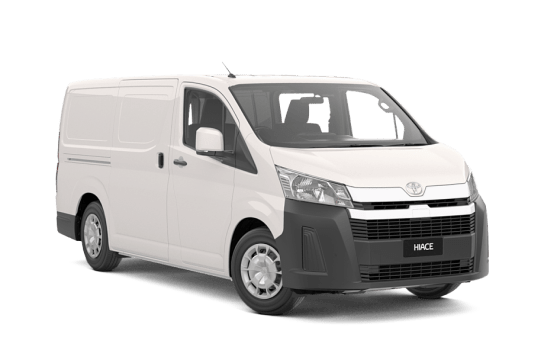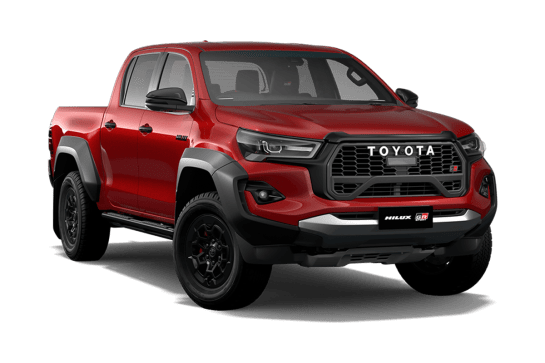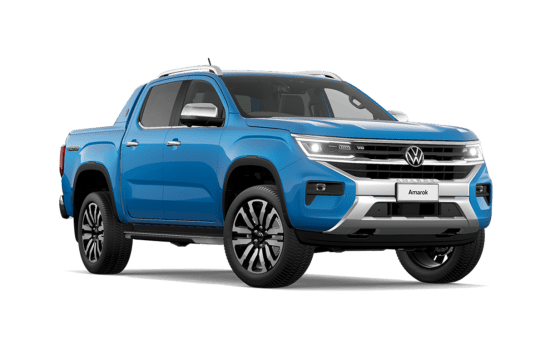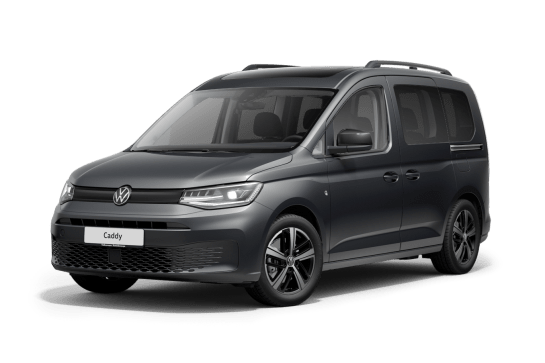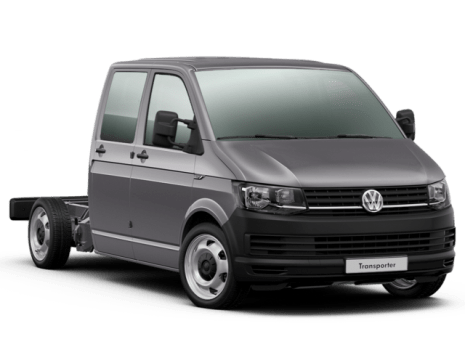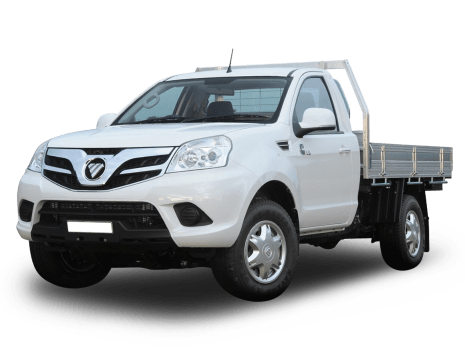
Foton Tunland VS Volkswagen Caddy 5
Foton Tunland
Likes
Dislikes
Volkswagen Caddy 5
Likes
- People mover/van in one
- Performance and comfort
- Fuel economy
Dislikes
- List price
- Tow ball download
- Turning circle
Summary
Foton Tunland
Beiqi Foton Motor Company Ltd (rolls off the tongue, doesn't it?), established in 1996, is one of China’s leading manufacturers of heavy-duty commercial vehicles. It also produces a light commercial range including the Tunland ute, which has ridden a rocky road in Australia with minimal sales traction since its local launch in 2012.
Back then distribution was handled by Queensland-based FAA Automotive Australia. In 2014, Ateco Automotive took over, but that only lasted until mid-2017, when Foton itself took charge of all Australian distribution and sales under the Foton Motor Australia Ltd banner.
A key factor in this move was a rationalisation of the local Tunland fleet, which now consists of only a dual cab ute. But through Foton’s numerous joint ventures with premium OEM suppliers (including Cummins, Borg Warner, Dana, Bosch and ZF), the latest Euro 5-compliant Tunland combines known brand components in a low-priced ute with which Foton plans to finally build a solid following.
| Safety rating | |
|---|---|
| Engine Type | 2.8L turbo |
| Fuel Type | Diesel |
| Fuel Efficiency | 8.3L/100km |
| Seating | 2 seats |
Volkswagen Caddy 5
Volkswagen’s Caddy Life seven-seater combines compact dimensions with efficient use of internal space and seating flexibility to deliver an effective combination of comfort and utility.
We recently spent a week with the premium model to see if this people-mover can meet the diverse requirements of busy families for work and play, in a people-mover segment dominated by the Kia Carnival.
Read more about
- Every new Volkswagen electric car, SUV and passenger car: VW kicks off new model offensive with ID.4, ID.5, ID.Buzz, Golf facelift, next-gen Tiguan and Multivan
- Chinese rivals present 'serious situation' that could cause Volkswagen to close its factory doors for the first time
- Volkswagen Touareg 2025 review: 210TDI Elegance
| Safety rating | |
|---|---|
| Engine Type | 2.0L turbo |
| Fuel Type | Diesel |
| Fuel Efficiency | 4.9L/100km |
| Seating | 7 seats |
Verdict
Foton Tunland 7.4/10
The 2018 Tunland is a big improvement on any Chinese ute we’ve driven. Foton has done a commendable job in selecting known brand components and bringing them together into one cohesive package that delivers robust performance. Although it doesn’t quite equal the sum of its parts (mostly owing to poor safety features and some technical quirks), it’s still a lot of 4x4 dual cab ute for not a lot of money, and it's worthy of a test drive.
Does the Foton Tunland challenge negative perceptions of Chinese utes? Tell us what you think in the comments below.
Volkswagen Caddy 58.3/10
Families could easily grow to like the Caddy Life. It’s not only enjoyable and economical to drive but its surprisingly spacious cabin offers comfortable seating for all three rows, two of which can be easily removed and replaced as required. It would be equally competent serving as both a weekday family carry-all and weekend escape machine.
Design
Foton Tunland
This is a big ute with an imposing presence, much like the Ford Ranger with which it shares similar dimensions (if not looks). Compared to the Ranger Wildtrak, the Tunland is 115mm shorter in wheelbase and 45mm shorter in overall length, but 20mm wider and 22mm taller. Ground clearance of 210mm is 27mm less and its kerb weight undercuts the Wildtrak by 250kg.
The Tunland uses traditional body-on-frame construction with a steel ladder-frame chassis, coil-spring twin-wishbone front suspension, leaf-spring live rear axle, four-wheel ventilated disc brakes and hydraulic power-assisted rack and pinion steering.
Chrome body highlights include the grille, driving lights, side mirrors, door handle inserts and body badges. The dashboard and interior trim feature strongly textured grey surfaces with a tasteful mix of piano black, chrome, satin chrome and carbon fibre-look highlights.
There’s good comfort for driver and front passenger, with a height-adjustable steering wheel and multi-adjustable driver’s seat with adequate under-thigh support that doesn’t feel too short like a Triton. The driving position is a big improvement on other Chinese utes we’ve tested, and is on par with many of the major players. The rear bench seat’s low cushion height results in raised upper thigh angles and knees, but also aids in providing unusually generous headroom, even for tall adults sitting in the higher centre position.
Volkswagen Caddy 5
The front wheel-drive Caddy Life rides on a 'Maxi' 2970mm wheelbase with MacPherson strut front suspension, multi-link rear suspension, electronic-assisted power-steering and four-wheel disc brakes. It has a 12.1-metre turning circle, which is larger than some one-tonne vans.
The spacious and airy feel of its cabin belies its relatively compact external dimensions, which are shorter in wheelbase, shorter in overall length and narrower (excluding door mirrors) than the Kia Carnival.
However, the Caddy Life is slightly taller than the Kia, resulting in generous headroom for all which enhances its spacious feel.
As a result, this cabin can comfortably accommodate passengers ranging from small kids to lanky teenagers to tall adults in all three rows, which we confirmed courtesy of my 186cm frame.
There’s ample space for the driver and front passenger and the second-row seating also offers adequate knee room, even for someone my height when sitting behind the driver’s seat in my position.
There’s less knee room in the centre position, though, due to the protruding console.
The second-row base cushions, which are split roughly 70/30, don’t have slide adjustment but you can alter the backrest angle. Although three kids could fit comfortably here, larger teens and adults would have limited shoulder room. So, for long trips with grown-ups, the second-row would work best with two.
And even though the third-row base-cushions are also fixed, the rearmost seating is remarkably spacious. Although the flat floor results in elevated knees for someone my height, it still provides enough foot, knee, shoulder and headroom for adequate comfort, so kids would find it even more accommodating.
Practicality
Foton Tunland
Figures used here are provided by Foton Motor Australia Ltd and differ slightly from those shown in sales brochures. With a claimed kerb weight of 2000kg and 2925kg GVM, the Tunland is rated to carry a decent payload of up to 925kg.
It’s also rated to tow up to 3000kg of braked trailer, and with its 5925kg GCM, can tow that weight without having to reduce its peak payload, which gets a big tick from us.
Load tub dimensions of 1520mm length, 1580mm width and 440mm height provide more than a cubic metre of enclosed load volume. There’s also 1140mm between the wheel arches (not wide enough for a standard Aussie pallet) plus four sturdy tie-down points for securing loads.
Cabin storage options includes a bottle holder and pocket in each front door, a shallow tray inset in the centre dash pad, an overhead sunglasses holder and single glovebox. The centre console has an open cubby up front, two cup holders in the centre and a small lidded box at the back which doubles as a well-placed armrest.
Rear doors also have bottle holders and storage pockets, plus there are flexible storage pockets on the rear of each front seat and a fold out dual cup holder on the rear of the centre console. The rear bench seat’s base cushion also swings up through 90 degrees to reveal two hidden storage areas beneath for the wheel-changing tools and other smallish items.
Volkswagen Caddy 5
With its 1742kg tare weight (unladen) and 2450kg GVM, the Caddy Life has a 708kg payload rating. In real world use, seven large adults would use up most if not all of that before you could add any luggage, so keep this load limit in mind if you need to carry half a rugby team to training.
However, for most urban requirements involving kids, this weight limit would be more than adequate if you need to haul them and their friends and their gear for a multitude of tasks, from weekday school runs to weekend sports to holiday getaways. And up to 100kg of that 708kg can be carried on the roof, which is ideal for storage solutions like roof-pods.
The Caddy Life is also rated to tow up to 1500kg of braked trailer. And with its generous 4213kg GCM rating (or how much it can legally carry and tow at the same time), that means it can haul its maximum payload while towing its maximum trailer weight, which is a handy capability for many work or play duties.
However, given the tow ball download (TBD) limit is only 75kg, that could present a challenge for those wanting to tow 1500kg given that TBD is usually around 10 per cent of trailer weight (or in this case about double the stated TBD limit).
Even so, one of the Caddy Life’s best features is the versatility of its second and third-row seats, which can be configured to significantly expand load volume.
For example, the backrests on both rows can be folded flat to provide a raised load floor sufficient for carting many bulky items from a load of cardboard for recycling to flatpack furniture.
However, if you need maximum load volume, the second and third rows can be easily removed from the vehicle to create a spacious van.
For starters, there’s more than half a metre of floor length and almost half a cubic metre of load volume behind the third-row seats, which is ideal for grocery shops, school bags and the like.
This expands to more than 1.4 metres of floor and more than 1.7 cubic metres of load volume when the third-row seat is removed.
This space expands again to more than 2.2 metres of floor length and more than 3.0 cubic metres of load volume with both the second and third rows removed.
That’s in the same ballpark as the small commercial van class (under 2.5-tonne GVM) and the sliding doors on either side provide similar load access, so in terms of moving either people or cargo, the versatility of this design makes it very efficient at both.
Given its primary role as a people-mover, there’s generous internal storage for personal items, starting with a large-bottle holder and deep bin in the base of each front door. There’s also a handy driver’s drawer in the right-side dash, open storage in the centre dash-pad and a large glove box.
The centre console has a pair of small-bottle/cupholders and there’s a lidded box at the rear. There’s also a full-width overhead shelf which can hold heaps of stuff and doesn’t feel too close to your forehead due to the generous roof height.
Second-row passengers get a small-bottle/cupholder and bin in each sliding door, plus there are pockets on the front seat backrests and some handy fold-down trays complete with cupholders which are ideal for snacks, games etc on long trips.
Third-row passengers are also well catered for with small-bottle/cupholders and storage on each side.
Price and features
Foton Tunland
The Foton Tunland is made in two model grades – the H-series (High End) and S-series (Super Value). The S-series (which is not sold here) is a low-cost, steel-wheeled version with components sourced from Chinese suppliers. The H-series is the premium model sold in Australia, so don’t let the red S badge on the tailgate confuse you as it did us at first. The S badge stands for Sport (not Super Value) and is only affixed to H-series vehicles.
The Tunland range comprises 4x2 manual ($26,990), 4x4 manual ($29,990), 4x4 auto ($33,990) and, thanks to its leather seats, 4x4 auto Luxury ($35,490). The 4x4 manual Luxury has recently had a big price reduction from $30,990 to $27,990, reflecting Australia’s growing preference for automatic transmissions.
Our test vehicle is the 4x4 auto, which for a snip under $34,000, brings numerous useful and desirable features including 17-inch alloys and beefy 265/65R17 road-biased tyres with matching spare, power/heated door mirrors, daytime running lights, side steps, auto headlights, rear-view camera and rear parking sensors, leather-trimmed steering wheel with audio/cruise control buttons, power windows, four-speaker sound system with multiple connectivity, eight-way (manual) adjustable driver’s seat and more. Plus there’s an extensive range of accessories.
Volkswagen Caddy 5
Our Life test vehicle is the premium offering in the two-model Caddy range, in this case powered by a TDI 320 2.0-litre, four-cylinder, turbo-diesel engine paired with a seven-speed dual-clutch automatic transmission.
Its list price of $56,790 is considerably more than the base model Kia Carnival diesel ($52,380) which offers an extra seating position. Our example is also finished in 'Fortana Red' metallic paint, which is an extra-cost option.
As the top-shelf model, the Caddy Life comes standard with 17-inch ‘Barahona’ alloys and 215/55R17 tyres plus a full-size steel spare, heated door mirrors, a power tailgate and side/rear privacy glass.
There’s also tasteful chrome detailing on the grille, roof-rails, sliding-door rails and body badges along with colour-coded bumpers and door-handles. Combined with the optional premium paint, this bling creates an upmarket appearance consistent with its premium model status.
Inside the carpeted and surprisingly spacious cabin are three rows of seating (the second and third rows are easily removable) neatly finished in ‘Trialog’ diamond-quilt-style fabric trim.
The driver is treated to keyless start, a multi-adjustable seat including four-way power lumbar support, a leather-wrapped multi-function steering wheel and a large left footrest.
There’s also an 8.25-inch colour touchscreen which serves as central command for the four-speaker multimedia system, with digital radio and multiple connectivity including Apple CarPlay and Android Auto.
Some vehicle settings, including climate control, auto stop/start etc are also touchscreen-controlled, but thankfully audio volume and tuning still use physical dials.
The family-friendly cabin also includes dual-zone climate control, heated front seats, wireless phone-charging, two USB-C ports, two 12-volt sockets, fold-down tables and heating/cooling vents for second-row passengers, LED reading lights, rear luggage compartment cover, lots of places to store stuff and more.
Under the bonnet
Foton Tunland
One of the Tunland’s strong points is its Euro 5-compliant 2.8-litre four-cylinder Cummins ISF turbo-diesel, which Foton claims is the first ute in the world to be powered by this engine. It delivers 130kW at 3600rpm and 365Nm across a pretty flexible 1600-3200rpm torque band.
The smooth-shifting six-speed German automatic behind it is from another premium OEM supplier in Friedrichshafen AG, better known as ZF. Its gearing and shift protocols are well matched to the engine’s characteristics, offering a choice of full-auto mode or sequential manual shifting. Console buttons also provide a choice of Economy, Sport or Snow driving modes.
American OEM giant Borg Warner supplies the part-time, dual-range 4x4 transfer case, while another major US supplier - Dana - has its stamp on the front drive-shafts and live rear axle assembly, featuring a 3.9:1 final drive and limited-slip differential. There’s no locking rear diff option available.
Volkswagen Caddy 5
Our premium grade Caddy Life is powered by VW’s excellent 2.0-litre four-cylinder turbo-diesel which produces 90kW of power at 2750-4250rpm and 320Nm of torque between 1500-2500rpm.
It’s paired with an equally refined seven-speed dual-clutch automatic gearbox, which provides the option of sequential manual-shifting in 'Sport' mode using the steering wheel-mounted paddle shifters. There's also an electronic diff lock.
Worth noting there's also a TSI220 version powered by a 84kW/220Nm 1.5-litre four-cylinder petrol engine.
Efficiency
Foton Tunland
Foton’s official combined figure is 8.7L/100km but our ‘real world’ road test figures based on fuel bowser and trip meter readings came in at 12.2 (after 503km) and 12.1 (after 297km). Based on those figures, you could expect a driving range of around 620km from its 76-litre tank. However, after only 500km the fuel gauge needle was nudging the red zone and the low-fuel warning light came on, so we weren’t game to find out if there was another 100km-plus of driving available from the theoretical fuel remaining.
Volkswagen Caddy 5
VW claims an official combined (urban/extra-urban) cycle consumption of only 4.9L/100km. By comparison, the dash display was showing a more realistic 7.2 at the completion of our 230km of testing, which was a mix of city, suburban and highway driving with a variety of loads, from driver-only to all seven seats being filled when attending a sporting event.
The dash readout was very close to our own figure of 7.8L/100km, calculated from actual fuel bowser and tripmeter readings, which is still thrifty economy for a seven-seater.
So, based on our numbers, you could expect a ‘real world’ driving range of around 640km from its 50-litre tank.
Driving
Foton Tunland
It’s a tight build free of rattles and squeaks, but the ride is too firm when empty or lightly loaded, particularly in the leaf-spring rear suspension which feels every small bump and delivers a sharp kick in your back over larger ones.
Otherwise, the chassis performance is more than adequate with its four-wheel disc brakes and steering that’s responsive and nicely weighted. Engine refinement and noise insulation are not best in class, but at highway speeds the combined engine, tyre and wind noise is certainly low enough to allow conversations without raised voices. The Cummins fairly lopes along here, with only 1800rpm at 100km/h and 2000rpm at 110km/h.
It’s also quite an agile and energetic performer around town, particularly in Sport mode. Maximum torque of 385Nm from the Cummins diesel is far from the strongest in this category, but the Tunland’s relatively low kerb weight helps to compensate for it with brisk getaways from standing starts and good throttle response in city and suburban driving.
To test its GVM rating we strapped 770kg into the load tub, which with driver was only about 50kg short of its 925kg payload limit. The rear springs compressed 50mm while the nose rose 18mm. This resulted in a near-level ride height and noticeably improved ride quality, with no major decline in steering or braking response.
With this load it was a competent performer on a variety of sealed and unsealed surfaces, including some bush tracks on which we engaged in both high and low range 4x4. Back on the bitumen, it also coped well with our two kilometre, 13 per cent gradient set climb, maintaining the 60km/h speed limit in third gear at 2250rpm all the way to the top.
Engine braking on the way down, though, was compromised by the auto transmission’s unusual shift protocols. With second gear manually selected (in sequential shift mode) it over-rode that selection and shifted up to third when the engine reached 3250rpm on over-run. We tried it again several times and got the same result.
Not sure if it’s an engine protection measure on Foton’s part (redline is 4000rpm) but it’s not a nice surprise when you’re heavily loaded on a steep descent and relying on engine braking to help restrain your speed.
Our only other gripes were poor radio reception on the AM band (too bad if you like talkback) and the cruise control, which stopped working during our test and would not switch back on.
Volkswagen Caddy 5
It exudes solid build quality and design integrity with light and responsive steering, strong braking and a typically European ride that strikes the right balance between the firmness needed for reassuring handling response and the suppleness needed to soak up bumps.
The seven-speed dual-clutch auto does a good job keeping the turbo-diesel operating within its torque sweet-spot between 1500-2500rpm for most of the time, where engine response is at its strongest in city and suburban driving.
Even when hauling a sizeable payload, as we did with all seven seats occupied, the 2.0-litre engine’s hearty 320Nm of torque maintained good response around town, where it didn’t feel overly sluggish or require manual-shifting to sharpen its response under this load.
It’s also a relaxed highway cruiser, requiring only 1600rpm to maintain 110km/h. Noise suppression is also commendable at these speeds, with negligible engine, tyre and wind noise intrusion.
Safety
Foton Tunland
Its three-star (out of five) ANCAP safety rating is poor, with single airbags for driver and front passenger only.
Bosch electronic stability control includes brake-force distribution and hill-start assist, but there's no trailer sway control or AEB. The rear seat offers three head restraints and lap-sash belts. There are also ISOFIX attachments on the two outer seating positions, but no top tethers. Foton says it has identified differences in ISOFIX fittings between China and Australia, which it is now addressing for future export models.
Volkswagen Caddy 5
It has a maximum five-star ANCAP rating awarded in 2021 (expires Dec 2027). Passive safety includes front, side and centre airbags for driver and front passenger plus side-curtain airbags for all three rows.
The extensive active safety menu includes AEB with pedestrian and cyclist monitoring, lane-keeping, blind-spot monitoring and rear cross-traffic alert, autonomous oncoming vehicle braking when turning, front and rear parking assist, reversing camera, tyre pressure monitoring and lots more.
There are three top-tether child-seat restraints for the second-row and two for the third-row, plus two ISOFIX anchorage points for both the second and third-rows.
Ownership
Foton Tunland
Expect a three year/100,000km warranty and service intervals of six months/10,000km whichever occurs first. Roadside assistance is also available.
Volkswagen Caddy 5
Warranty is five years/unlimited km plus 12 months roadside assist.
Scheduled servicing is every 12 months/15,000km whichever occurs first.
Capped-price for the first five scheduled services up to five years/75,000km totals $3275, or an average of $655 per year. VW also offers pre-paid five-year service plans which offer significant savings.


